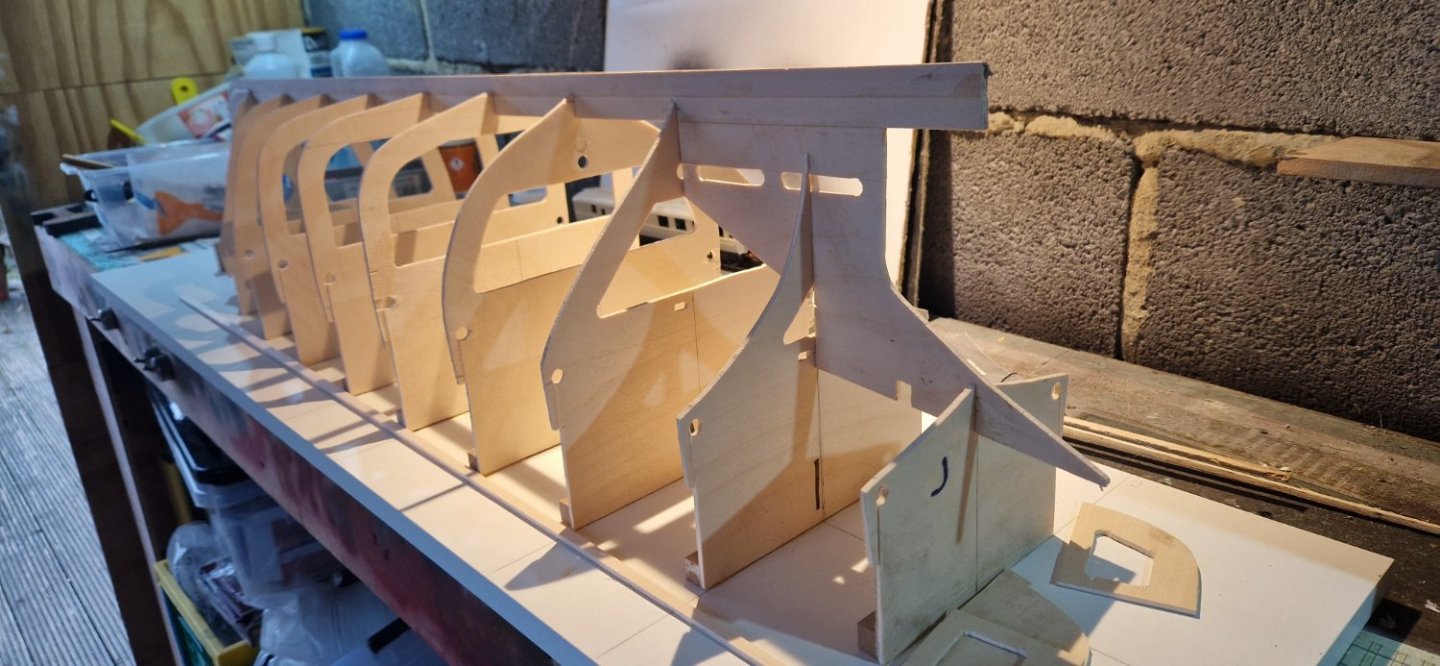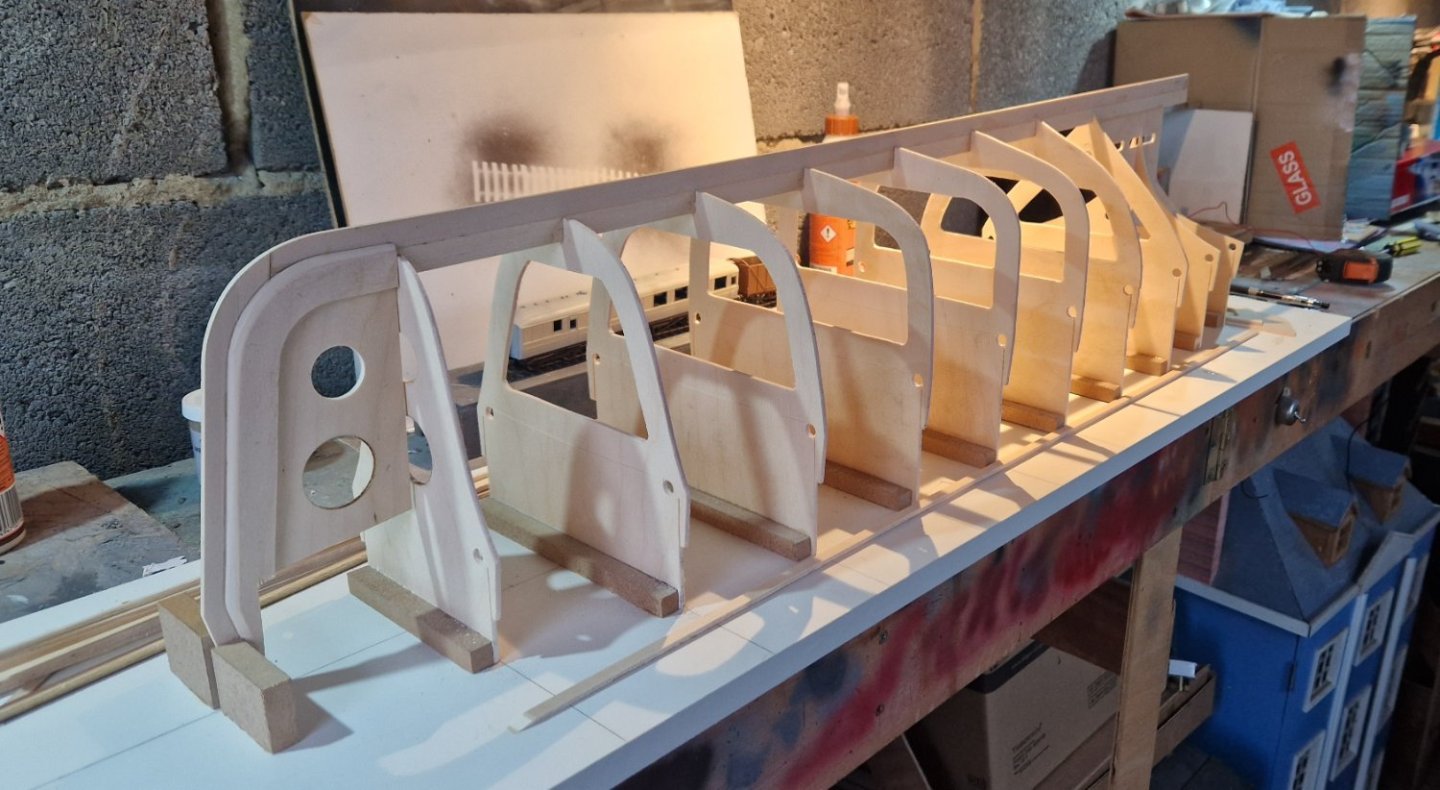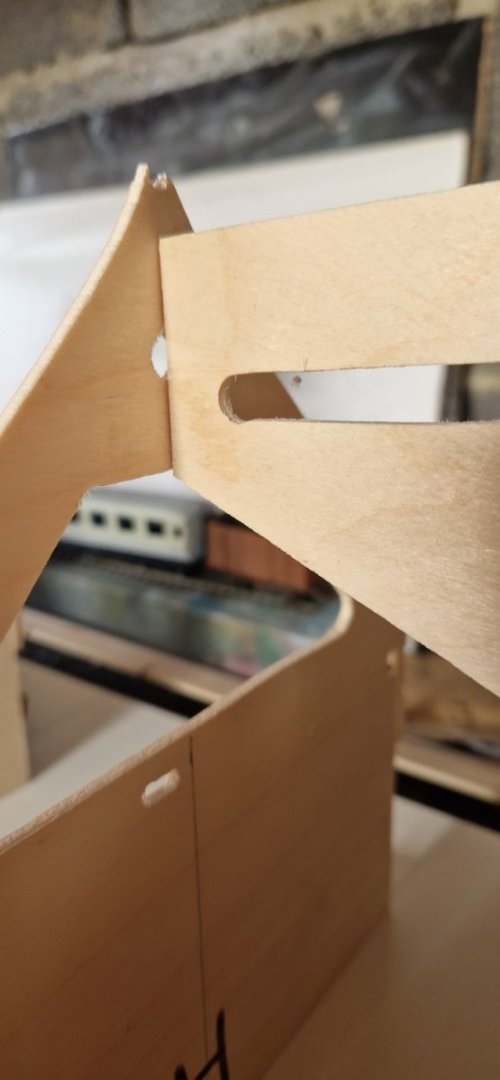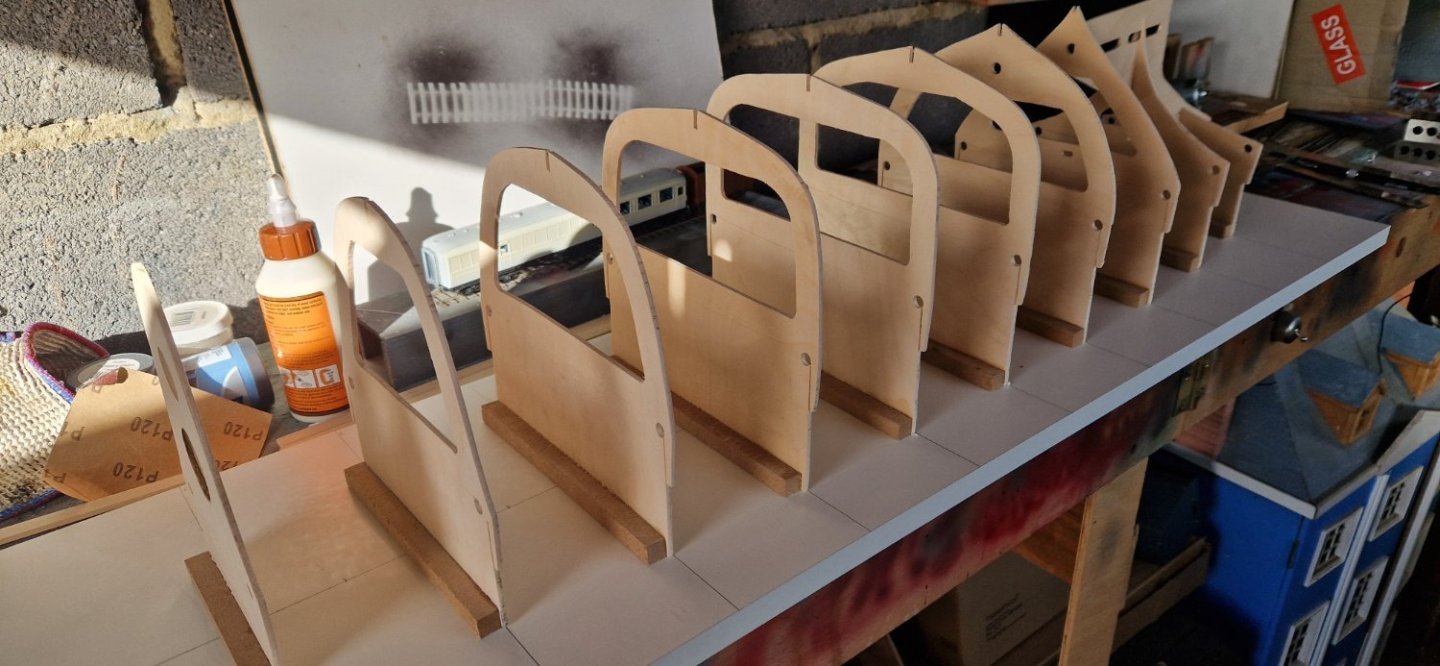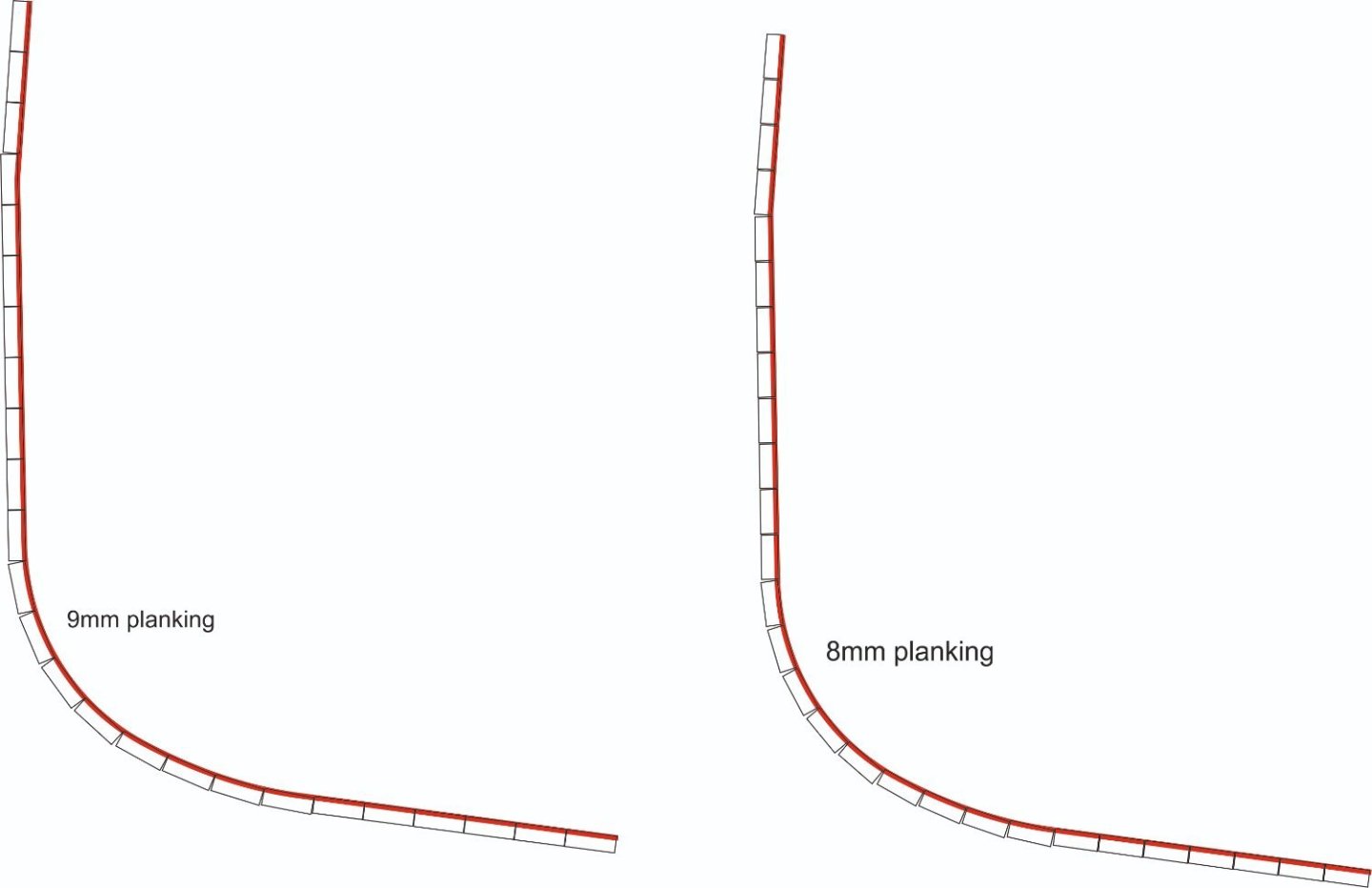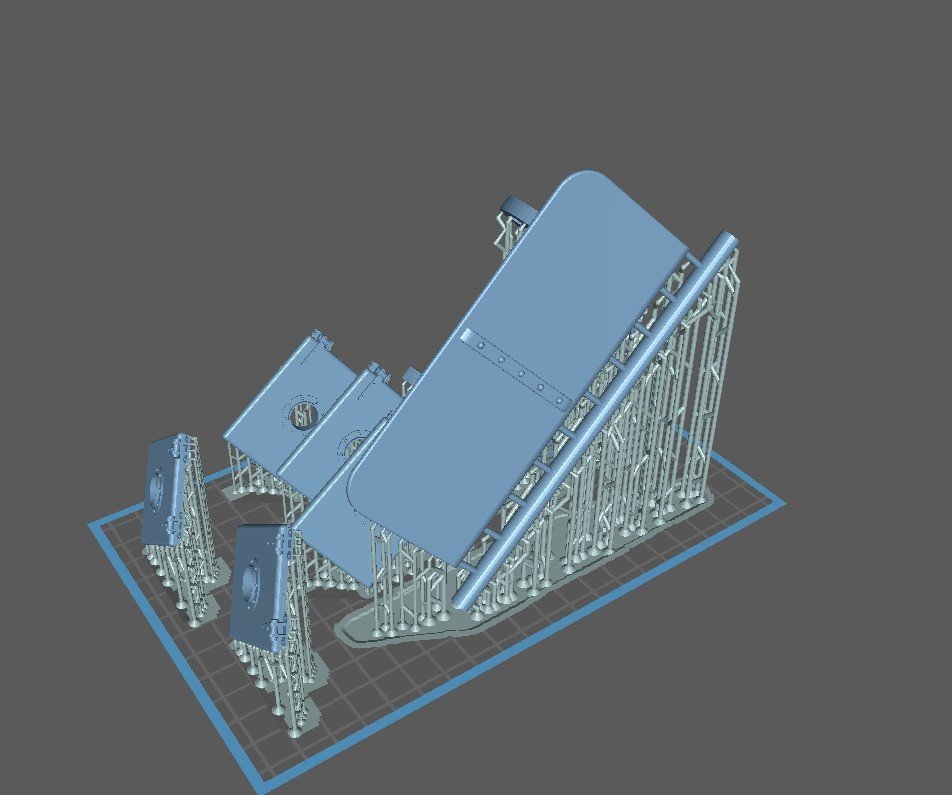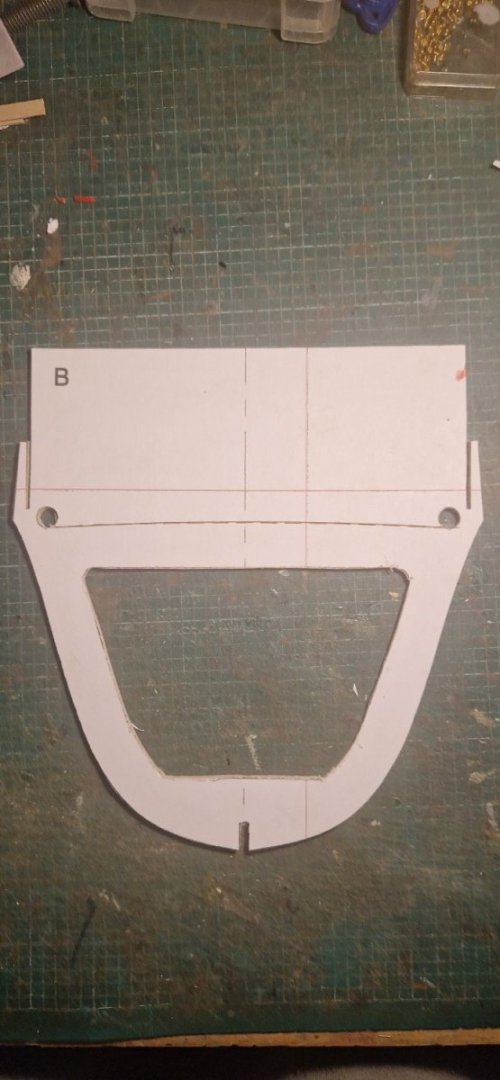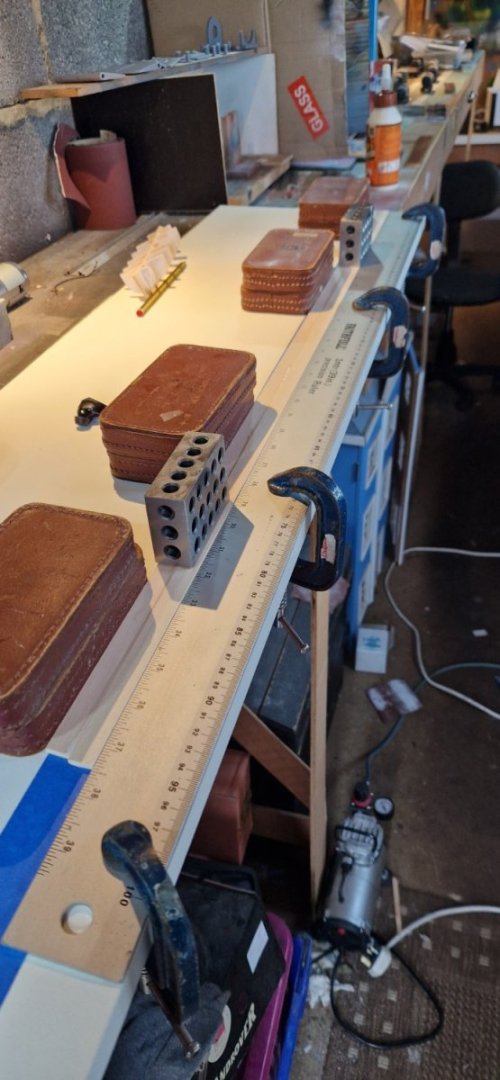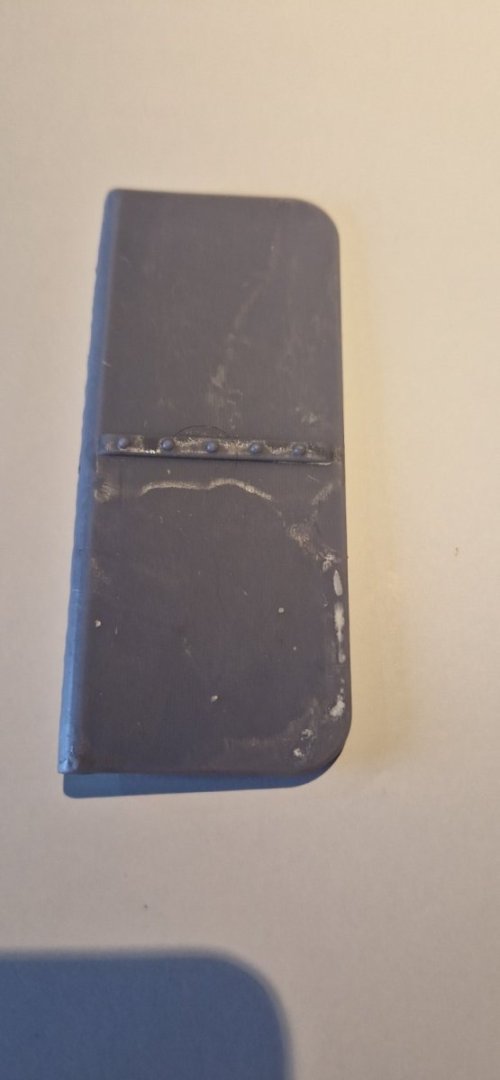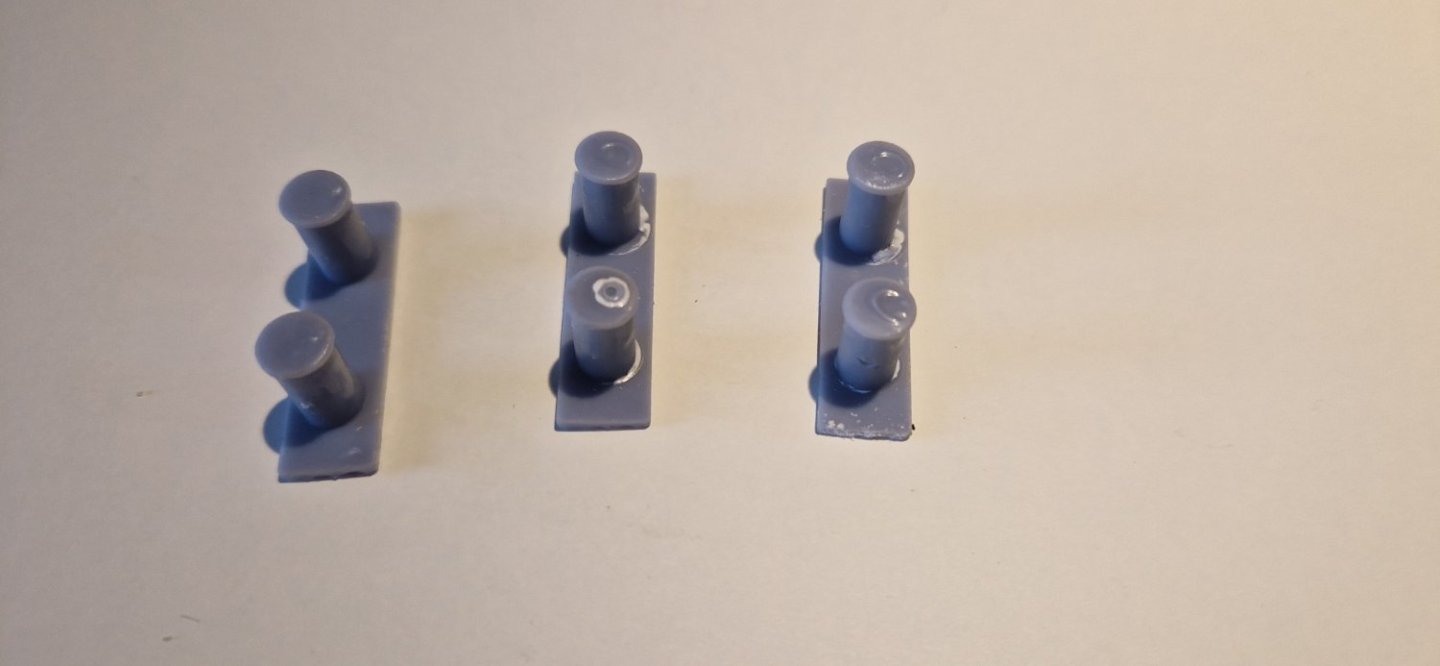
Ikcdab
Members-
Posts
31 -
Joined
-
Last visited
Contact Methods
-
Website URL
https://www.rmweb.co.uk/forums/topic/157222-charlton-bridge-4mm-brs/
Profile Information
-
Gender
Male
-
Location
Somerset UK
Recent Profile Visitors
-
 GrandpaPhil reacted to a post in a topic:
Steam Tug Wattle by Ikcdab - 1:24 - my first scratchbuild
GrandpaPhil reacted to a post in a topic:
Steam Tug Wattle by Ikcdab - 1:24 - my first scratchbuild
-
 mtaylor reacted to a post in a topic:
Steam Tug Wattle by Ikcdab - 1:24 - my first scratchbuild
mtaylor reacted to a post in a topic:
Steam Tug Wattle by Ikcdab - 1:24 - my first scratchbuild
-
Thanks to @KeithAug @druxey and @wmherbert for your helpful advice. I'm not sure how I avoid bending "in the wide direction" as it seems essential to me that the first plank should follow the line of the deck. With regards to my previous question about appropriate planking width, I realise that they don't all have to be the same width....I will get the table saw going tomorrow and cut planks in 6, 7 and 8mm widths and see how it goes .. Thanks again
-
 oakheart reacted to a post in a topic:
Steam Tug Wattle by Ikcdab - 1:24 - my first scratchbuild
oakheart reacted to a post in a topic:
Steam Tug Wattle by Ikcdab - 1:24 - my first scratchbuild
-
 Landlubber Mike reacted to a post in a topic:
Steam Tug Wattle by Ikcdab - 1:24 - my first scratchbuild
Landlubber Mike reacted to a post in a topic:
Steam Tug Wattle by Ikcdab - 1:24 - my first scratchbuild
-
 Valeriy V reacted to a post in a topic:
Steam Tug Wattle by Ikcdab - 1:24 - my first scratchbuild
Valeriy V reacted to a post in a topic:
Steam Tug Wattle by Ikcdab - 1:24 - my first scratchbuild
-
 Valeriy V reacted to a post in a topic:
Steam Tug Wattle by Ikcdab - 1:24 - my first scratchbuild
Valeriy V reacted to a post in a topic:
Steam Tug Wattle by Ikcdab - 1:24 - my first scratchbuild
-
 mtaylor reacted to a post in a topic:
Steam Tug Wattle by Ikcdab - 1:24 - my first scratchbuild
mtaylor reacted to a post in a topic:
Steam Tug Wattle by Ikcdab - 1:24 - my first scratchbuild
-
 Harvey Golden reacted to a post in a topic:
Steam Tug Wattle by Ikcdab - 1:24 - my first scratchbuild
Harvey Golden reacted to a post in a topic:
Steam Tug Wattle by Ikcdab - 1:24 - my first scratchbuild
-
Bulkheads all now fixed to building board, keel made up and we are ready to start planking. I have, of course, watched endless youtube clips about planking, so I am soaked in how to do it....but confused by the variations - everybody has their own methods. So, what are the top tips for planking? The designer says to start at deck level and lay in a few planks either side of that. The lay in planks from the garboard and fill in the gap. Is that the best way?
-
 GrandpaPhil reacted to a post in a topic:
Steam Tug Wattle by Ikcdab - 1:24 - my first scratchbuild
GrandpaPhil reacted to a post in a topic:
Steam Tug Wattle by Ikcdab - 1:24 - my first scratchbuild
-
 GrandpaPhil reacted to a post in a topic:
Steam Tug Wattle by Ikcdab - 1:24 - my first scratchbuild
GrandpaPhil reacted to a post in a topic:
Steam Tug Wattle by Ikcdab - 1:24 - my first scratchbuild
-
I have come across a snag. I have cut out the bulkheads exactly as per the drawings. When I assemble them, I have a mismatch between the hole for the propellor tube on the final bulkhead and where the cutout (slot) is on the keel section. See picture below When I measure it on the drawings, I see the mismatch. There is a 8mm discrepancy, the diameter of the hole. I don't see how I can change the slot because of I move it down the propeller will no longer fit. All I can think of doing is to fill the holes in the bulkheads and refill them too match the slot. Then I'll need to shim the motor so that the shaft matches the redrilled holes. Any thoughts?
-
Hi Keith, thanks. We shall see. Luckily I can back out and change things if it doesn't work out. As you say, I said I was using balsa right up front and all the advice on here was not to, despite that being what the original designer used. I do have plenty of clamps, we shall just have to see how it goes. I guess narrower planking will be easier than wider in that case. Ian
-
So the reprint was successful. I now have a straight, unwarped rudder. Ill upload a picture tomorrow. Meantime i am still cutting out bulkheads. So a question, how do i decide the width of the planking? The drawings are silent on this, so its a bit of guess work. The longest length from the gunwale to the keel is about 270mm. here is a drawing showing 8mm and 9mm planking. I guess that where the sides are flat then its immaterial, but more important arouind the turns, and also where the planks bend around the stem and stern. My temptation is to go for 8mm planking, Any advice gratefully received.
-
So tonight I am going to reprint the rudder. The screenshot below shows that I have added a sacrificial "sprue" along the bottom edge in order to try and keep the rudder from warping on the build plate. You can also see that I am going to print the remaining hatches and, hidden behind the rudder, is the motormount. Its a 9 hour print, so Ill run it overnight. Lets hope this one is more successful....
-
And I have also started cutting out the bulkheads.... This is the first one. The top edge is sacrificial and once the planking is complete, gets get off along the curved dashed line. The instructions say to "score this line" which I have done, probably cutting half way through. I am apprehensive as to how easy it's going to be to release the hull from the building board in this way. Anyone got any experience of this?
-
And so to actual construction. The keel is 25mm x 3mm basswood, but I could only buy 12.5mm x 3mm, so I have just to laminate two bits together. I was concerned to get these true, they are 950mm long. You can see the setup I used to get these glued true. I fastened down a 1m straight edge to my building board and held the wood tight with weights. I held the wood flat with some 123 blocks. Glue now drying.
-
So some progress. I think I can 3d print many of the fittings for the boat. I very much enjoy using fusion360 and I have used this to design a number of features. I have now printed some. Below are the double bollards: And here are engine room hatches with portholes built in. And a failure. This is the rudder, but it has warped while printing. So I now need to reprint it, bit with additional supports to keep it true. The bend you see is not an optical illusion... I have also designed funnel, portholes, skylight, vents etc. But not printed them yet. More to came later. Ian
-
Hi Roger thanks, I am not familiar with any of those sort of calculations and i know nothing about the motor's torque curve, the prop geometry or the hull resistance. Do people really make all of those sort of calculations for a model boat? if so, where do i find the info? Bearing in mind its a 12v motor, if i link it up to 7.2v NiMH 5ampere batteries, then that should give slower revs and a reasonable duration?
About us
Modelshipworld - Advancing Ship Modeling through Research
SSL Secured
Your security is important for us so this Website is SSL-Secured
NRG Mailing Address
Nautical Research Guild
237 South Lincoln Street
Westmont IL, 60559-1917
Model Ship World ® and the MSW logo are Registered Trademarks, and belong to the Nautical Research Guild (United States Patent and Trademark Office: No. 6,929,264 & No. 6,929,274, registered Dec. 20, 2022)
Helpful Links
About the NRG
If you enjoy building ship models that are historically accurate as well as beautiful, then The Nautical Research Guild (NRG) is just right for you.
The Guild is a non-profit educational organization whose mission is to “Advance Ship Modeling Through Research”. We provide support to our members in their efforts to raise the quality of their model ships.
The Nautical Research Guild has published our world-renowned quarterly magazine, The Nautical Research Journal, since 1955. The pages of the Journal are full of articles by accomplished ship modelers who show you how they create those exquisite details on their models, and by maritime historians who show you the correct details to build. The Journal is available in both print and digital editions. Go to the NRG web site (www.thenrg.org) to download a complimentary digital copy of the Journal. The NRG also publishes plan sets, books and compilations of back issues of the Journal and the former Ships in Scale and Model Ship Builder magazines.

